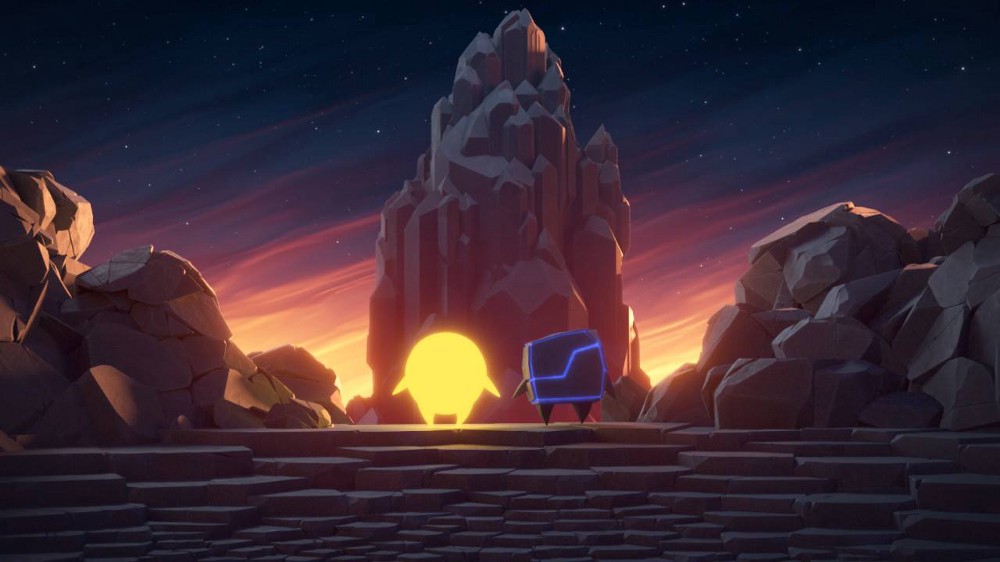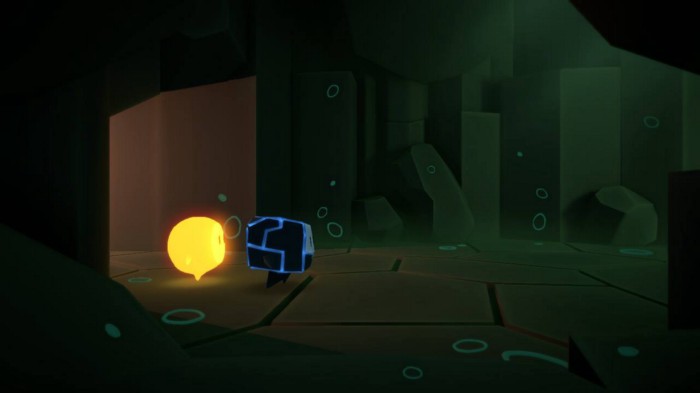
Pode
The second game from Norwegian studio Henchman and Goon is here. Pode is a cutesy 3D puzzler, featuring a playable rock and a playable star — I tried the first 20-minutes on my own. You should not.
Pode begins when a star, known as Glo, falls from the sky — once landed, Glo then meets Bulder, the rock character. The two quickly form a partnership, with the shared goal of helping this fallen star get back home. With a connection made, the two set about traversing a network of ancient caves set within a mountain, solving a series of puzzles along the way.

After spending a little while exploring some of these chambers it becomes apparent that you’ll probably get so much more from Pode as a shared experience. With this in mind, I grabbed my couch co-op partner and we both set about exploring further, together.
Now, to be clear Pode is quite upfront in suggesting that it’s best played with two. Right from the offset, before you even launch the game, it asks whether you want the co-op mode enabled or not. This is well and truly designed as a co-op experience, and although you can play solo with ease, I can say for sure that it’s enhanced dramatically by having someone to share it with.
Pode’s two-player focus is underlined by each characters unique abilities. Bulder is a heavy little rock who can use their weight to push down buttons, or slot into tunnels. Glo can shed light on dark areas, revealing the path ahead, and can float from one platform to another.
Each of the caves you find yourselves in acts as it’s own little puzzle room, and you’ll need to use a mix of the duos abilities to progress. Sometimes Bulder will have to solve a task, sometimes it will be down to Glo, and in other instances the pair will need to work in tandem in order to press on. This collaboration is key to advancing, and having someone by your side to discuss each cave in detail is a bonus — particularly as a lot of the puzzles are based on spotting things to interact with in the environment.

The puzzles you face are all integrated in a seemingly organic way into the aforementioned surroundings. Pode’s caves are all beautifully designed, with decorative paintings, pockets of light, and flora that reveal themselves and elegantly flourish in a way that’s inspired by Norwegian Rosemäling folk art. Glo is often the one bringing such organic beauty to each cave, shining lights on plants and seeing them grow in a way that reminds me favourably of my time playing thatgamecompany’s Flower. Bulder on the other hand is more mechanical, shifting rocks and using their weight to operate switches and platforms.
You’ll spend your time in Pode traversing through a series of empty dark caves, figuring out how to traverse its various cliffs and plateaus, and leaving it transformed with greenery. As you get deeper into the cave network, the puzzle elements become a little more challenging, requiring you to asses your surroundings with more and more care. It’s here where Pode doesn’t quite hit the right balance. The relaxing gameplay of beautifying each space can often be frustrated by obtuse rummaging around, figuring out what you need to do to progress.

For the most part though Pode is an endearing, and chilled out adventure, offering a welcome alternative to typical fast-paced experiences. The puzzles, mechanics and gameplay on offer complement each other well enough‚ just be sure to experience this one with a friend to get the most from it.
The Nintendo Switch is home to a group of great couch co-op games — and Pode is the latest such addition to this growing collection of living room friendly experiences. This is the sort of thing I can see myself picking up and playing on a rainy Sunday afternoon, with a friend of course. It’s a nice option to have.
